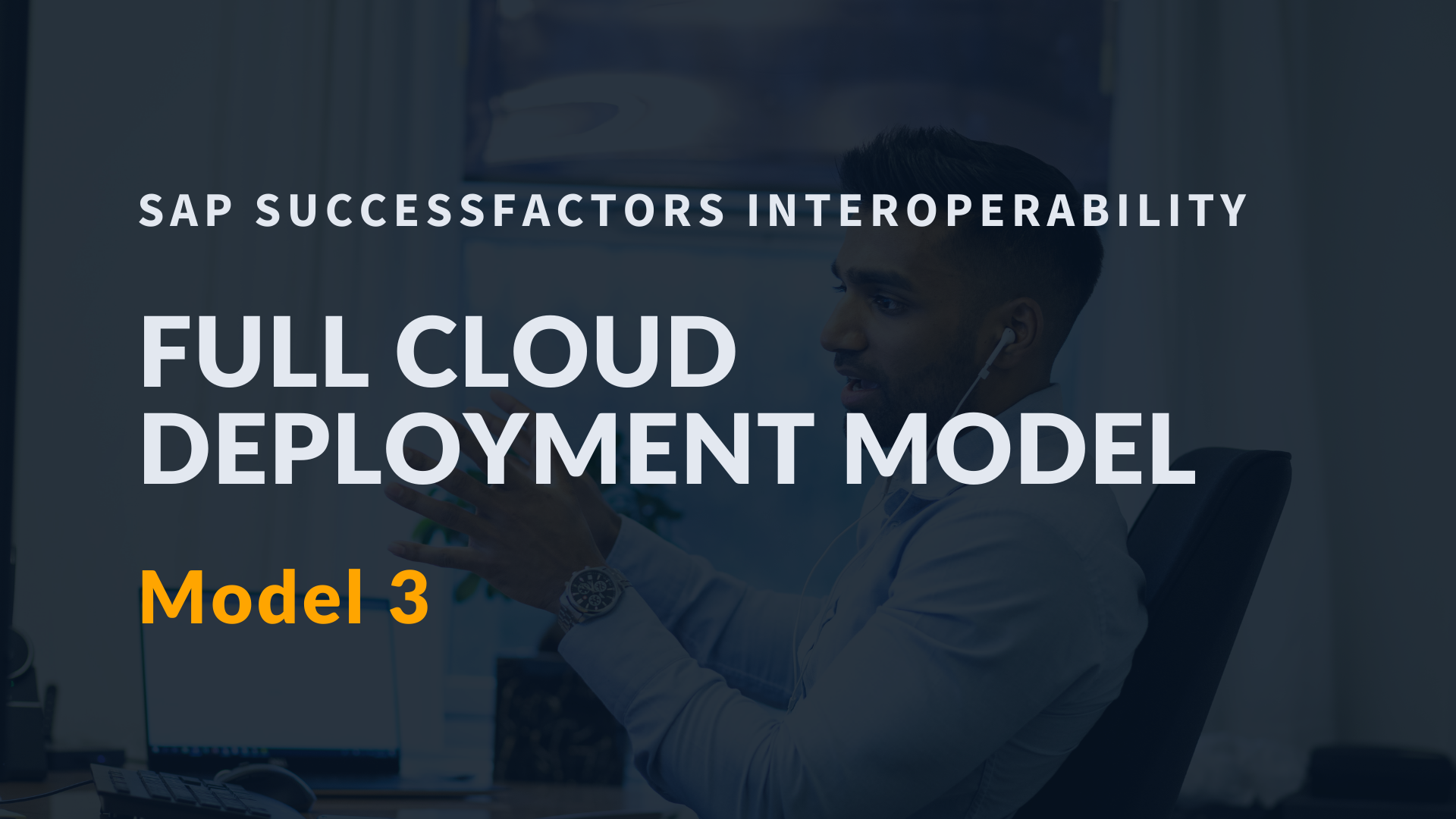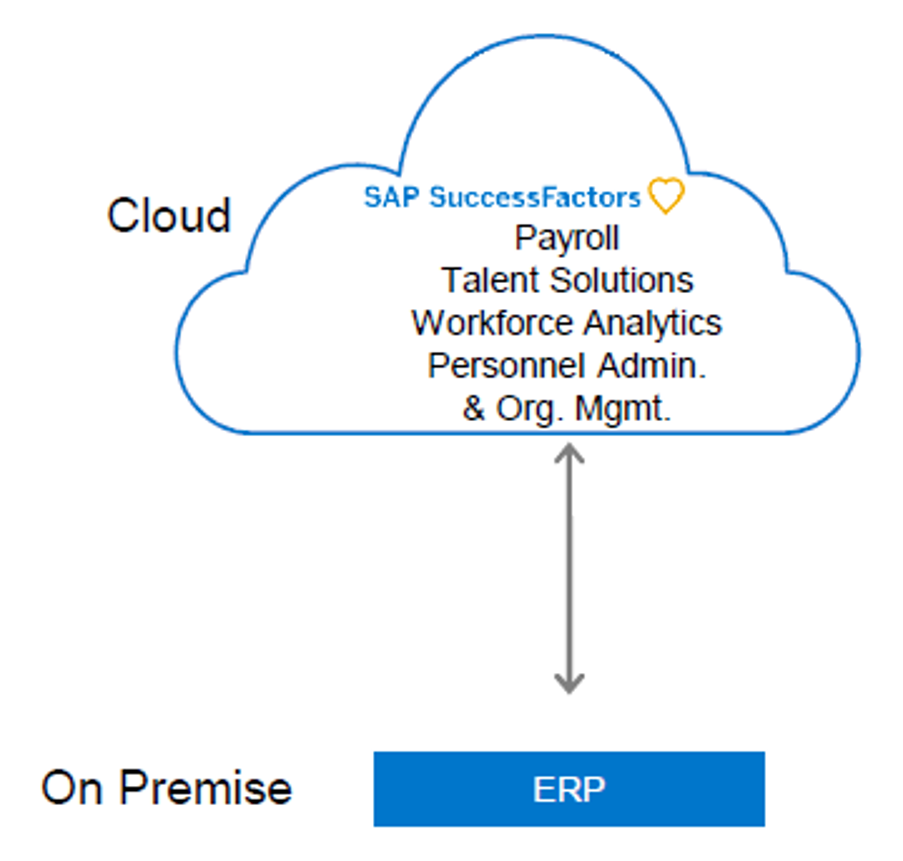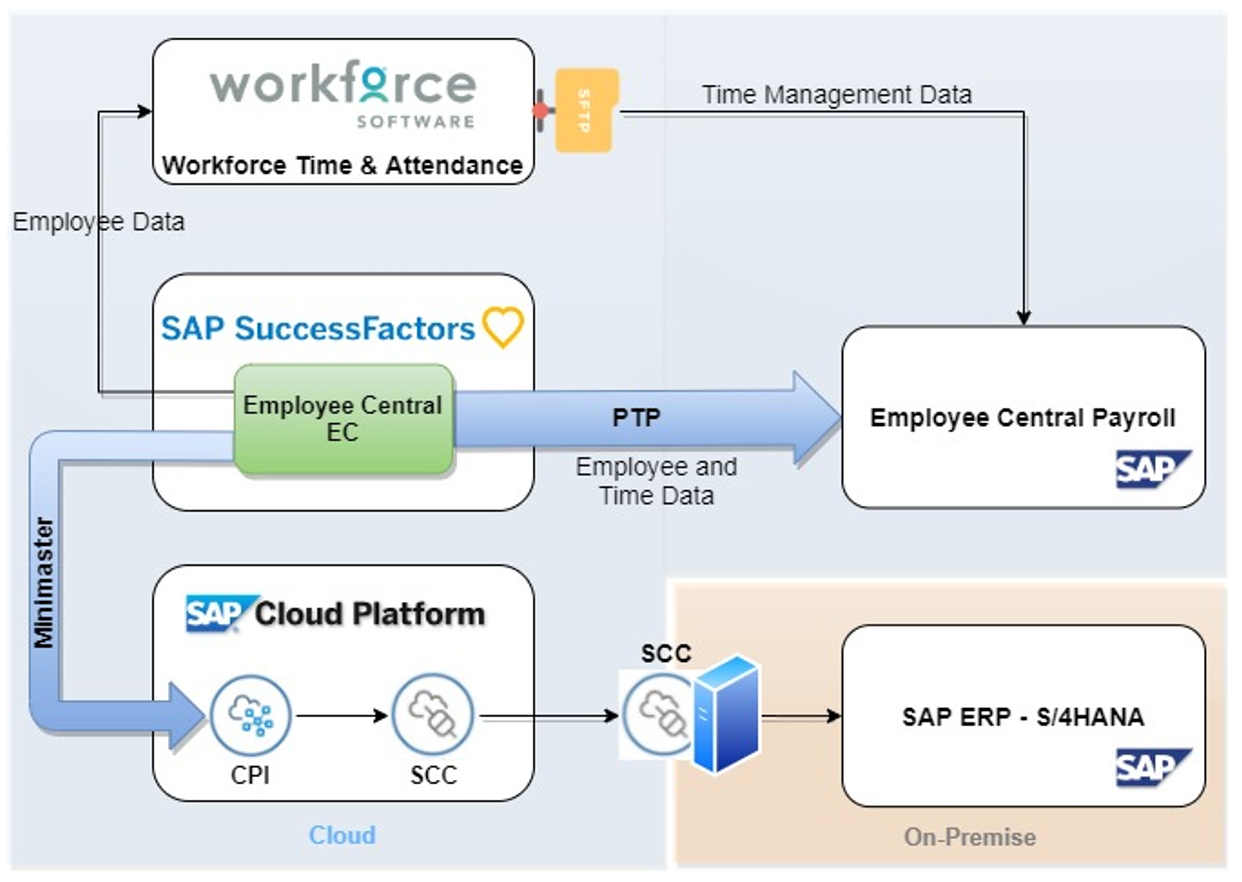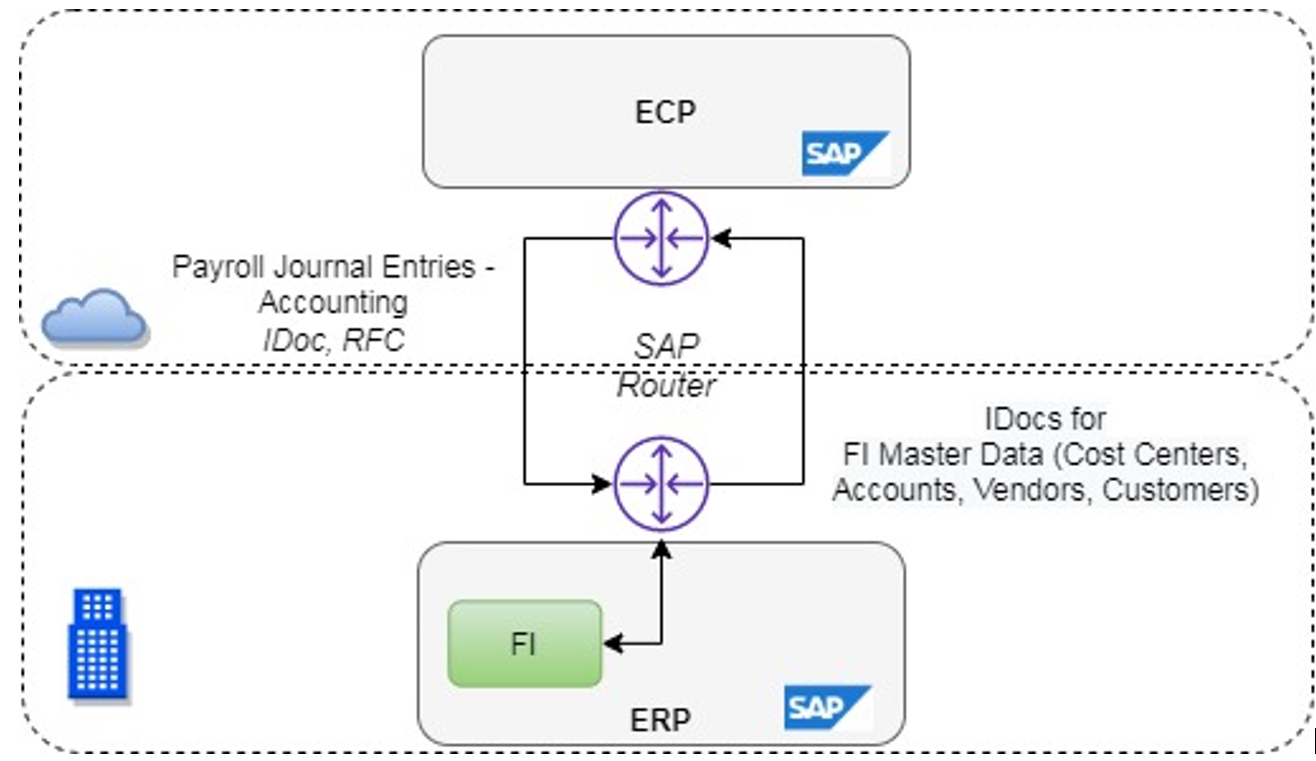
*Ce contenu est disponible en anglais seulement.
This blog is for SAP SuccessFactors End-Users and Project Teams
This is the third of four blogs regarding the SAP SuccessFactors deployment model. The first blog was on the Talent Hybrid model, and the second addressed the Core Hybrid Model. Today, we will talk about the Full Cloud Deployment Model. SAP SuccessFactors users and project leads, please allow me to elucidate.

More about the Full Cloud Deployment Model

Full Cloud - provided by SAP
The full Cloud deployment model was created to cover all functionalities in the cloud. This model also takes Employee Central from SuccessFactors as a starter point of transmission. This model is widely used by companies that do not have SAP ERP or S/4HANA, although, it can be used in combination with it.
Employee Central Payroll is the component that supplies payroll functionality in the cloud. This system has a similar operation to an ERP On-premise but is fully managed by SAP, and is located in their own data centers. The integration of the Full cloud model is called PTP (Point to Point). PTP integration does not utilize SAP CPI or Boomi middleware, however, the first versions of integration were developed under Boomi.

PTP Integration data flows – Based on SAP documentation
PTP integration is more restricted (it has a pre-defined mapping template) and may require more Abap codification than BIB integration. PTP only considers the transmission of organizational objects as a descriptive list. Both integrations (BIB and PTP) can run together when ERP and ECP systems are within the customer's landscape. In this configuration, the BIB integration takes the name of the mini master because the ERP only requires the replication of basic information (info type 000, 001, 002, others depending on the ERP module to be maintained).

FI master data integration
In addition to the Mini master replication, it is possible to configure FI master data transfer scenarios between the ERP and ECP using IDoc distribution models and SAP Router connectivity. The transfer-payroll-run-process results for accounting also require additional RFC connectivity. For information replication for a(n) S/4HANA system, the BP - Business Partner scenario is used.
Depending on business needs SAP recommends the use of partner solutions such as Workforce Software. There are pre-packaged integration contents for SAP vendors integrations available in the SAP Business API Hub.

Main considerations
Most of the BIB replication recommendations are applicable in PTP integration. The differences between the integration are listed below:
- Connectivity between SuccessFactors and ECP does not require middleware or a reverse proxy (SAP Cloud Connector or WebDispatcher).
- Mash-ups and web functionalities from ERP can also be configured directly without a proxy reverse.
- There are additional features for the control and replication of time data.
- It is possible to access ECP via a Web browser. However, capabilities such as debugging or transaction features for Abap development are only available in the SAP GUI through VPN connectivity.
- Connectivity between local ERP and ECP systems are supported through the RFC and IDoc protocol. It is necessary to ensure visibility, security and communication between the customer's local SAP Router and the SAP Router through public IPs, private IPs and default ports (port 3299).
- Administrative tasks, operative system requirements and infrastructure support are managed by SAP.
In the next blog, we will explain the Fourth Model, Side by Side and 3rd Party. Stay tuned!
Jann Paul Cortés Serrato
HRIS Senior Technical Consultant
IN-RGY